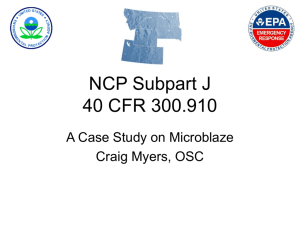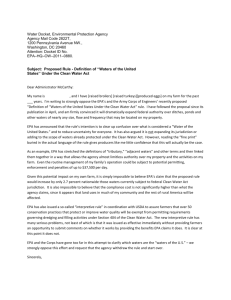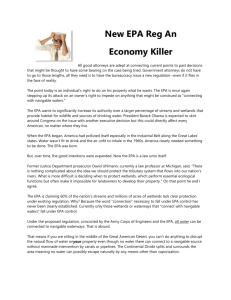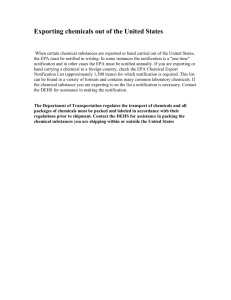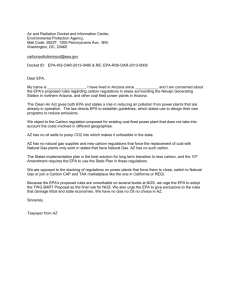Oil Development and Response in R8
advertisement
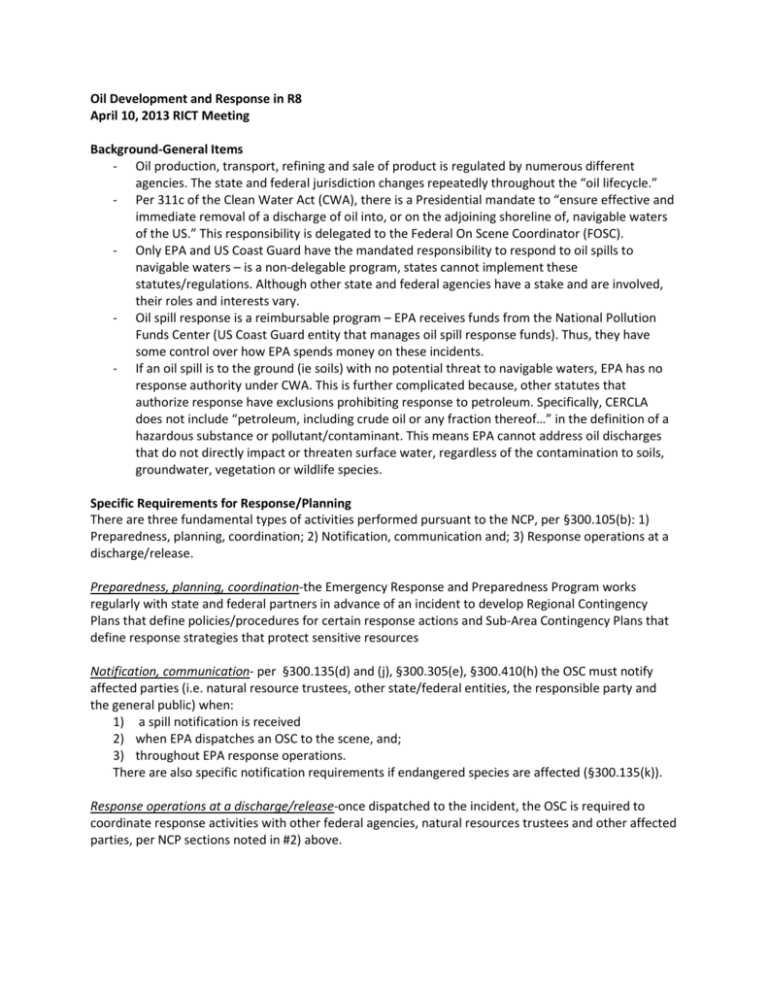
Oil Development and Response in R8 April 10, 2013 RICT Meeting Background-General Items - Oil production, transport, refining and sale of product is regulated by numerous different agencies. The state and federal jurisdiction changes repeatedly throughout the “oil lifecycle.” - Per 311c of the Clean Water Act (CWA), there is a Presidential mandate to “ensure effective and immediate removal of a discharge of oil into, or on the adjoining shoreline of, navigable waters of the US.” This responsibility is delegated to the Federal On Scene Coordinator (FOSC). - Only EPA and US Coast Guard have the mandated responsibility to respond to oil spills to navigable waters – is a non-delegable program, states cannot implement these statutes/regulations. Although other state and federal agencies have a stake and are involved, their roles and interests vary. - Oil spill response is a reimbursable program – EPA receives funds from the National Pollution Funds Center (US Coast Guard entity that manages oil spill response funds). Thus, they have some control over how EPA spends money on these incidents. - If an oil spill is to the ground (ie soils) with no potential threat to navigable waters, EPA has no response authority under CWA. This is further complicated because, other statutes that authorize response have exclusions prohibiting response to petroleum. Specifically, CERCLA does not include “petroleum, including crude oil or any fraction thereof…” in the definition of a hazardous substance or pollutant/contaminant. This means EPA cannot address oil discharges that do not directly impact or threaten surface water, regardless of the contamination to soils, groundwater, vegetation or wildlife species. Specific Requirements for Response/Planning There are three fundamental types of activities performed pursuant to the NCP, per §300.105(b): 1) Preparedness, planning, coordination; 2) Notification, communication and; 3) Response operations at a discharge/release. Preparedness, planning, coordination-the Emergency Response and Preparedness Program works regularly with state and federal partners in advance of an incident to develop Regional Contingency Plans that define policies/procedures for certain response actions and Sub-Area Contingency Plans that define response strategies that protect sensitive resources Notification, communication- per §300.135(d) and (j), §300.305(e), §300.410(h) the OSC must notify affected parties (i.e. natural resource trustees, other state/federal entities, the responsible party and the general public) when: 1) a spill notification is received 2) when EPA dispatches an OSC to the scene, and; 3) throughout EPA response operations. There are also specific notification requirements if endangered species are affected (§300.135(k)). Response operations at a discharge/release-once dispatched to the incident, the OSC is required to coordinate response activities with other federal agencies, natural resources trustees and other affected parties, per NCP sections noted in #2) above.

